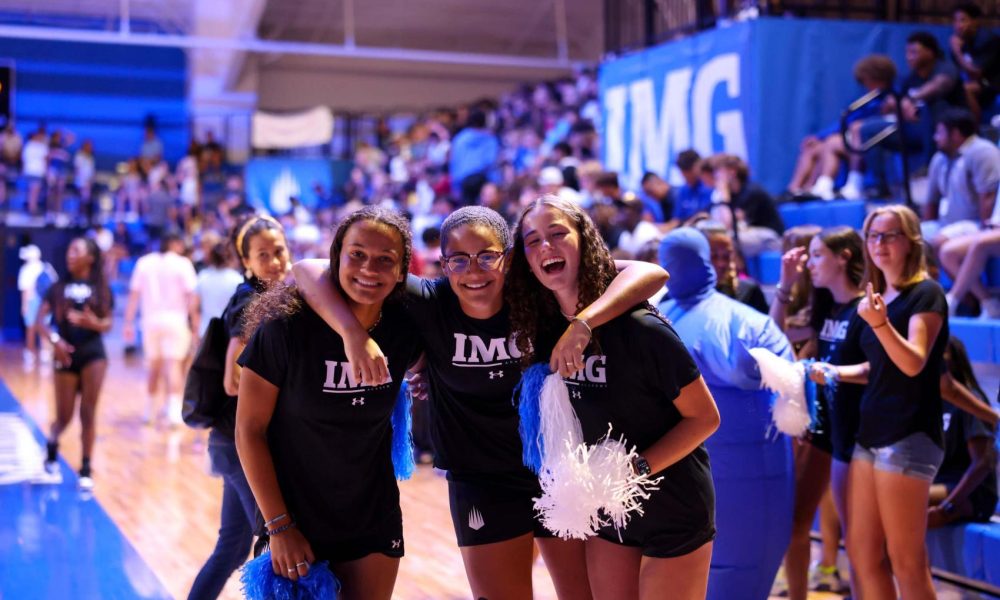College Sports
House v. NCAA Settlement: What It Means for You
IMG Academy Jun 10, 2025 The recent House v. NCAA settlement marks a transformative shift in college athletics. At IMG Academy, we’ve been preparing for this moment for years. As a leader in student-athlete development, we’re not just responding to these changes – we’re ahead of them. Through groundbreaking partnerships with Merrill and Advance NIL, […]

The recent House v. NCAA settlement marks a transformative shift in college athletics. At IMG Academy, we’ve been preparing for this moment for years. As a leader in student-athlete development, we’re not just responding to these changes – we’re ahead of them.
Through groundbreaking partnerships with Merrill and Advance NIL, we’ve been educating our student-athletes on NIL, financial literacy, and personal brand building. This isn’t new territory for us – it’s part of the comprehensive and holistic development we deliver every day.
Navigating the future of college sports requires more than just talent on the field. It takes education, preparation, and the right guidance. IMG Academy is proud to stand beside families as these new opportunities unfold. Whether your student-athlete is preparing for college or just beginning their journey, we’re here to help you make sense of what’s next.
Here’s what you need to know about the ruling:
What is House v. NCAA about?
House v. NCAA is an antitrust lawsuit that argued the NCAA and its member schools unlawfully restricted student-athletes from profiting off their name, image, and likeness (NIL). The settlement includes:
- A $2.8 billion payout to former Division I student-athletes
- A framework for future revenue sharing between schools and student-athletes
Will my student-athlete get paid to play in college now?
Maybe, but it depends.
- Starting in 2025, schools can opt to share a “cap” of up to $20.5 million with their student-athletes, beginning July 1, 2025. That cap may grow by ~4% annually.
- Each school decides how to allocate that money
- Football and men’s basketball will likely receive the largest shares
- Other sports — like softball, track, or swimming — may receive much less. In some cases, teams may only receive a few hundred thousand dollars to divide across the entire roster
Will more changes come?
Yes, this is just the beginning. Many details still need to be finalized, and additional legal challenges are expected:
- A “cap” limits how much schools can pay. If that cap is seen as unfair, it may be challenged in future lawsuits
- Families should expect recruiting, roster management, and scholarship models to evolve in the coming years
Which student-athletes are covered by the settlement?
This applies to all Division I student-athletes who:
- Competed on or after June 15, 2020
- Or will compete anytime through June 5, 2035
That includes today’s middle schoolers, high schoolers, and postgrads aiming to play Division I sports.
Do all schools have to follow the new model?
- All Power 5 schools (plus Notre Dame) must follow the new rules
- Other Division I schools can choose to opt in
- Division II and III schools are not yet affected — though future adjustments may eventually ripple into those divisions
What if my student-athlete lost a roster spot because of this?
If a school cut a student-athlete in preparation for this settlement:
- They’re required to offer that roster spot back
- The student-athlete won’t count against team roster limits
- However, coaches still retain the discretion to determine whether a student-athlete is a fit for their program
What else is changing?
- The NCAA is eliminating 150 outdated rules to modernize student-athlete benefits
- A new governing body, the College Sports Commission, will oversee enforcement
- A tech platform, NILgo, will help schools track athlete compensation and ensure compliance. Any third-party NIL agreement over $600 will be reviewed, with external arbitration if disputes arise.
IMG Academy is committed to helping student-athletes and families understand this once-in-a-generation shift in college athletics. While there’s real opportunity ahead, there are still many unanswered questions.
The best things you can do right now is stay informed, stay flexible, and keep advocating for your student-athlete